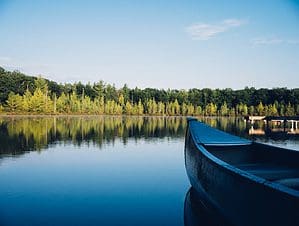Tech News
What Are the Benefits of Lake Aeration?
Having a lake aeration system in place is an excellent way to help maintain the water’s health and safety. There are many benefits to having aeration installed on a lake, including improving water quality, eliminating the need for a winter kill, enhancing circulation, and protecting against pollution.
Water quality
Using a lake aeration system is a simple and effective way to improve the quality of a lake. It can improve the health of the water and its inhabitants while reducing algae and other pollutants. Aeration helps improve water quality by providing dissolved oxygen. It prevents algae from blooming and reduces odors. It also promotes the biodegradation of lake sediments. It reduces the occurrence of algae spores, which move toward deeper lake areas. Aeration also reduces the production of eggs from larvae-based insects. Aeration can also help reduce the buildup of toxic gases. It improves water circulation, which keeps fish and other aquatic animals healthy. It also helps to control the growth of invasive aquatic plants.
Circulation
Using an aeration system can improve the overall health of your lake. Aerators help to keep dissolved oxygen levels high, which is essential for fish. Aeration is necessary for winter when the water is at lower temperatures. This helps to prevent eutrophication and fish kills. There are several different ways to add dissolved oxygen to water. This includes using mechanical aeration, diffuse aeration, or using surface aerators. Each technique has additional advantages and disadvantages. Stratification occurs when water temperatures change as it goes deeper—stratification results in lower oxygen levels and a buildup of organic sediment. Using diffuse aeration helps to prevent stratification. Aeration can also help to maintain a hole in the ice. This helps to ensure sunlight is not blocked. The hole in the ice also provides a good place for oxygen to gather.
Winter kill
When ice covers a lake, fish die because of a lack of oxygen. However, aeration can help keep the water open and allow oxygen to reach the fish. Increasing dissolved oxygen levels can help reduce winter kill. Aeration is the process of pumping air through hoses into the lake. This process causes the water to circulate and break up the ice on the surface. This process also increases the DO reserves in the water at the point of ice formation.
The amount of oxygen in the water is measured in milligrams per liter. However, the water can only absorb a certain amount of oxygen before the fish start to stress. This is why aeration is an essential component of spring water health. Several types of aeration systems include pumps and baffles, surface aerators, and molecular oxygen. In addition to artificial aeration, there are many natural ways to improve your pond’s oxygen levels.
Safety
Increasing oxygen levels in a lake are essential for the survival of fish and other aquatic life. Aeration can help prevent algae blooms and reduce odor problems associated with stagnant water. When aeration is not appropriately implemented, it can degrade the quality of the water. This is why it is essential to consult a water quality professional before installing an aeration system. Bodies of water without proper aeration will not break down nutrients quickly, which can contribute to algae’s growth. Additionally, toxic gases can build up beneath the lake. These gases need to escape into open water to disperse. When these gases reach the surface, they create foul odors. This is the primary reason why pond fountains are fitted in water features, as the fountain stirs the water and helps with the reoxygenation process. It’s crucial to do this, especially in residential water features, as stagnant contained bodies of water that smell can also begin to attract flies and other insects which can be a bother when trying to enjoy outdoor spaces. Aeration can also protect a body of waters edges from ice damage. Ice can become unstable when ice sports or other activities push it. If the ice is not thick enough, the ice can break and move back towards the shoreline. It can also damage structures near the coastline.
Cost
Whether you’re a lake owner or real estate developer or want to improve the clarity of your lake, aeration is an essential step to taking care of the water. It will keep you and your fish healthy and reduce the amount of organic sediment and debris in your water. Depending on your budget, pond aeration can cost anywhere from about $70 to $500. The cost is also dependent on the size of the pond. For smaller ponds, the average price is around $400. Larger ponds can cost anywhere from $800 to $2,000 or more. A complete aeration package includes a manifold, a heat-resistant hose, and an oil-filled pressure gauge. These packages are very durable and can withstand rips and fishing hooks. You can find complete aeration packages for lakes up to four acres in size. Most aeration systems are designed for ponds of this size and range in price from $500 to $8,000. The cost of aeration depends on the type of system you choose and your area’s electricity costs.





